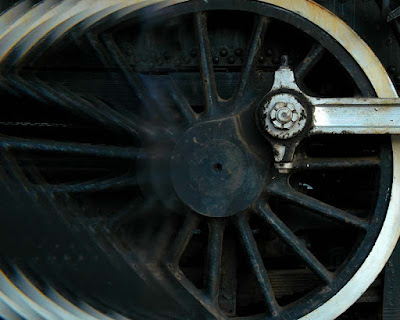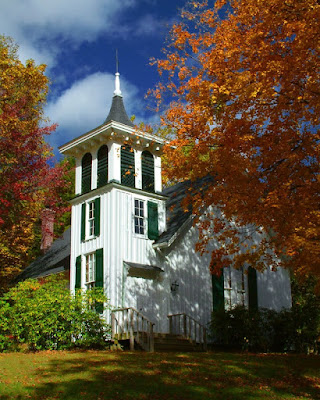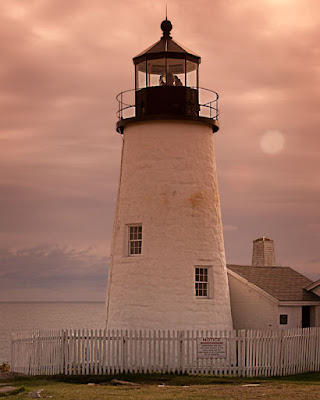
Actually, I'm not really blowing my own horn. The model and the "really good photographer" are the same person. Today's subject is a friend's teenage daughter. The friend is a professional photographer and some of her talent has rubbed off on her daughter. A group of friends went to a reasonably local park for some shooting and a picnic. Small groups went every which way, shooting various subjects. This young lady was the "gear guard". I was talking to one of the folks attending the shoot about rapid fire shooting in a bracketing mode to obtain a series of images that could be used for HDR work. He had a Nikon D3 and I had a Nikon D300. He had heard my camera during the shooting of a sequence and commented on the fact that he could hear the camera "bog down", or so he thought. He bragged that his camera could shoot a sustained 7 or 8 frames per second. I suggested he might want to try the same shot I had just taken. He set his camera to shoot a seven shot sequence, ranging from -3 to +3 EV in one stop increments. He raised his camera and fired. To his surprise, his camera "bogged down" just as mine had. He looked confused and asked if I knew what had happened. Here's the explanation. The "normal" exposed in the shade was 1/60th of a second in aperture priority mode. Therefore, his sequence was 1/500 (+2 stops), 1/250 (+2stops), 1/125 (+1 stop), 1/60 (normal exposure), 1/30 (-1 stop), 1/15 (-2 stops) and 1/8 (-3 stops). You can't hear the difference between 1/500, 1/250 or 1/125 second exposures. You'd be hard pressed to differentiate between 1/60 and 1/30. But, when you start getting down to 1/15 or 1/8 second shutter speeds your "click" becomes "clliicck" and the change becomes noticeable. He forgot that the sustained firing rate was dependent on the shutter speed. To find out how today's image came about, hit the "read more".
Read more!
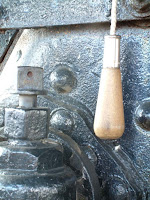
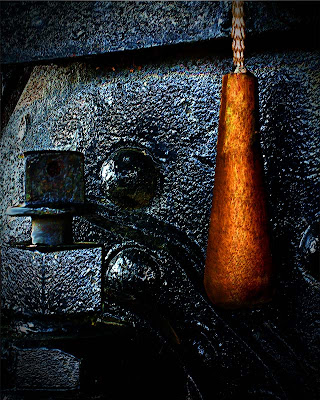 Today's image (the large shot on the right) started with the small image on the left. I can think of a dozen things that needed to be done to get from one to the other. The first thing that is quite evident is "how" a camera's meter reads a scene. You can see the proper color in the finished image. The inside of the cab of the old steam train is painted black. The camera's sensor was pointed directly at a large black mass. It did a great job of trying to produce an 18% grey. Lately I've seen a lot of ink talking about "exposing to the right". Well, that's exactly what the camera's meter did in this case. It really had no choice. It has no intelligence, it's there to "record" what's in front of it, period. It did a fine job doing what it was asked to do. Is the original a "work of art"? No, it's a place to start, it's the negative from which we can start the image making process. The first thing that needed to be done was to straighten up the image. In the original you can see the handle cord hanging on a slight angle. It's unnatural, so we can use that to square up the image. To learn about a couple of the other things this image needed to fully develop, hit the "read more".
Today's image (the large shot on the right) started with the small image on the left. I can think of a dozen things that needed to be done to get from one to the other. The first thing that is quite evident is "how" a camera's meter reads a scene. You can see the proper color in the finished image. The inside of the cab of the old steam train is painted black. The camera's sensor was pointed directly at a large black mass. It did a great job of trying to produce an 18% grey. Lately I've seen a lot of ink talking about "exposing to the right". Well, that's exactly what the camera's meter did in this case. It really had no choice. It has no intelligence, it's there to "record" what's in front of it, period. It did a fine job doing what it was asked to do. Is the original a "work of art"? No, it's a place to start, it's the negative from which we can start the image making process. The first thing that needed to be done was to straighten up the image. In the original you can see the handle cord hanging on a slight angle. It's unnatural, so we can use that to square up the image. To learn about a couple of the other things this image needed to fully develop, hit the "read more".



